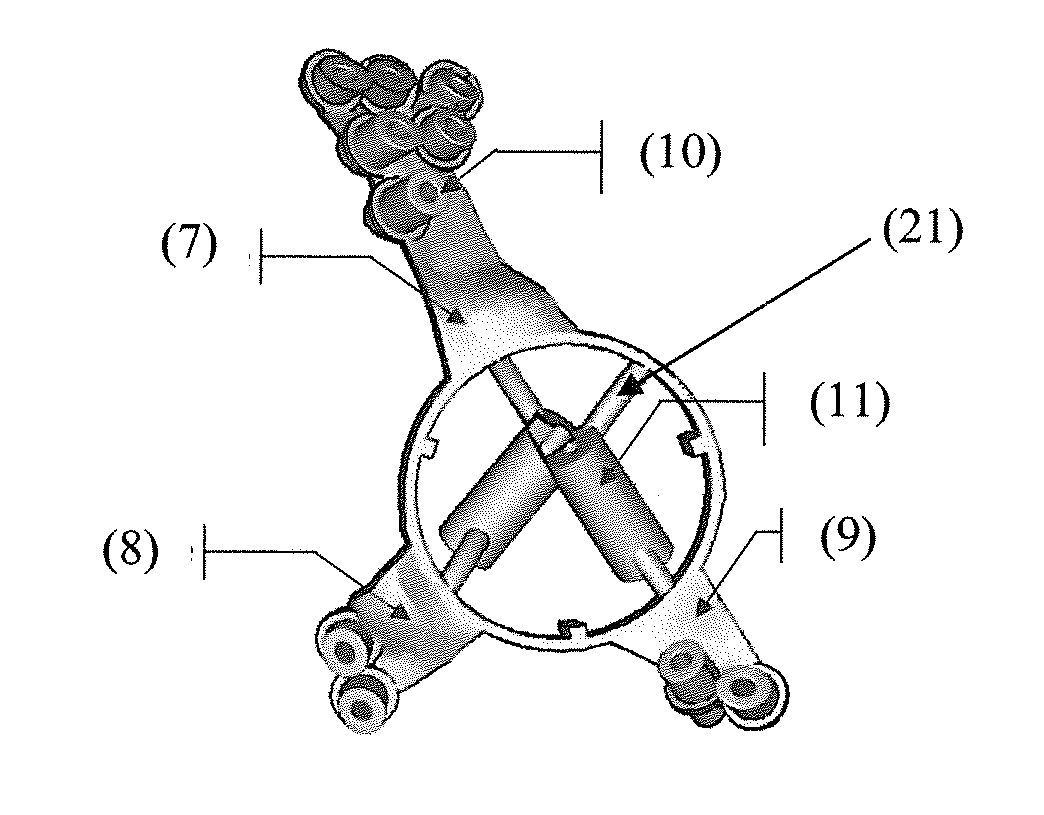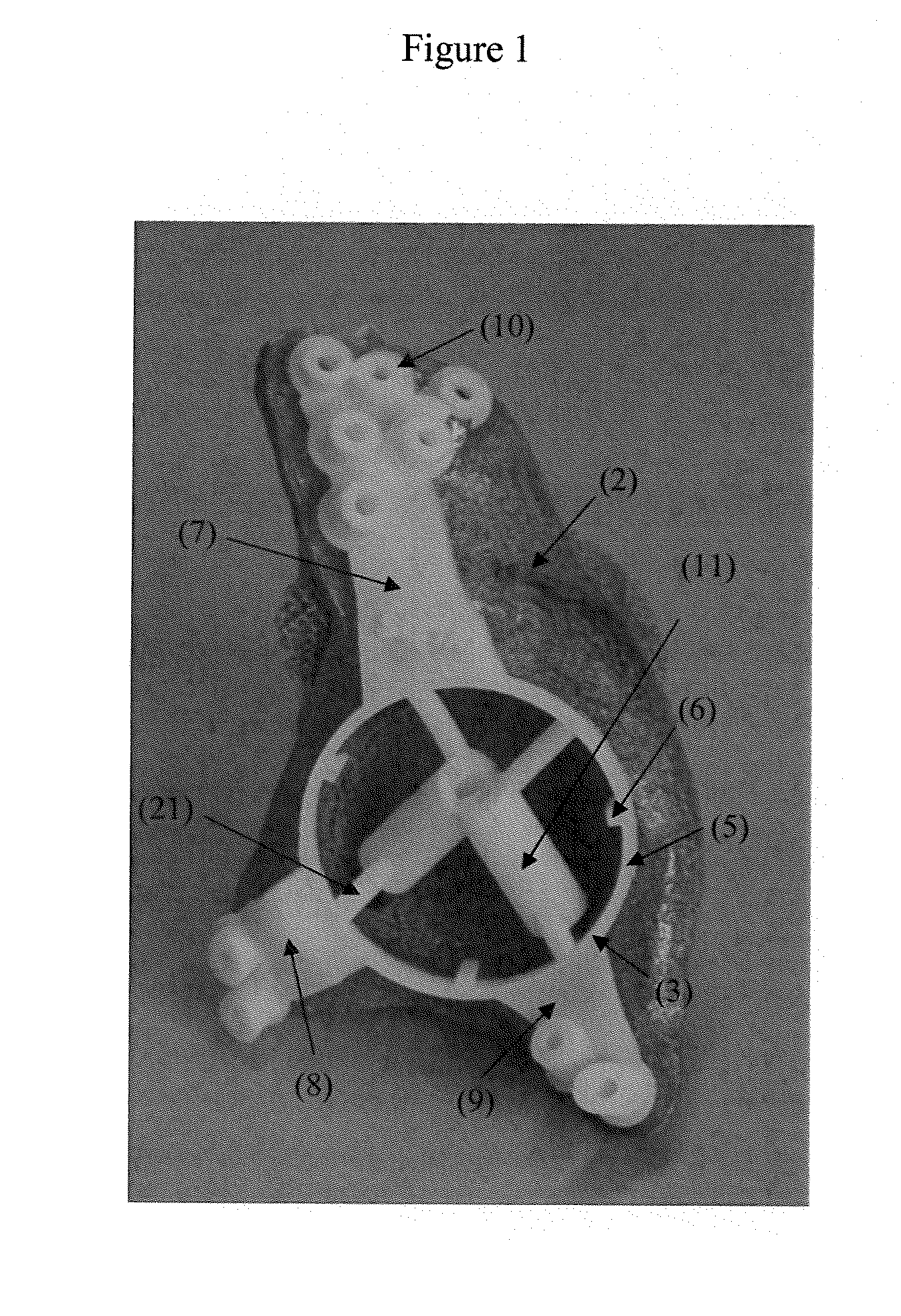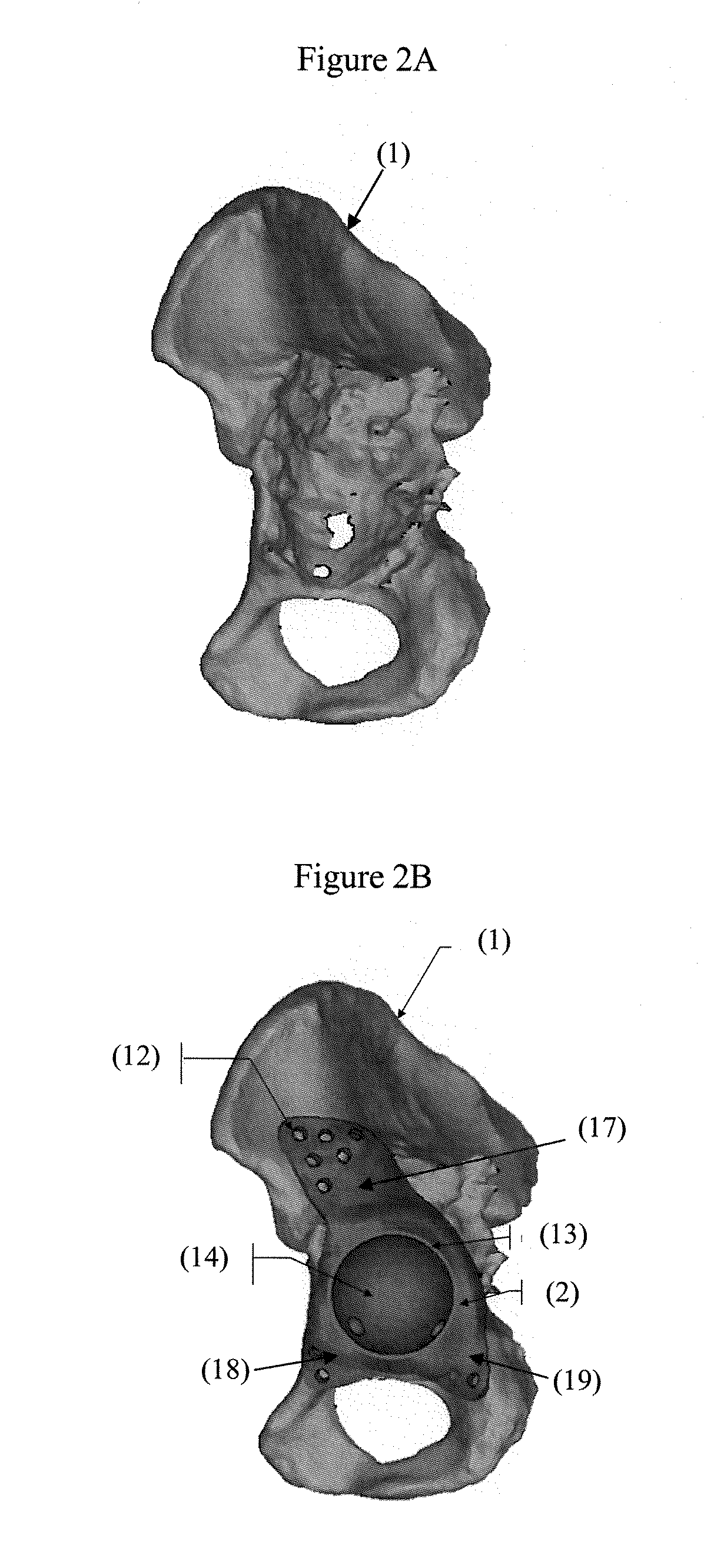Customized surgical guides, methods for manufacturing and uses thereof
a surgical guide and custom technology, applied in the field of surgical guides, can solve the problems of fracture or perforation of the bone, more time-consuming and difficult procedures, and less satisfactory results, and achieve the effect of improving accuracy
- Summary
- Abstract
- Description
- Claims
- Application Information
AI Technical Summary
Benefits of technology
Problems solved by technology
Method used
Image
Examples
examples
[0194]The invention is further illustrated herein below by means of the following non-limiting embodiments.
[0195]In particular embodiments, the invention is applied for acetabular cup replacement and the custom surgical guides according to the present invention are designed to fit on a patient-specific acetabular implant.
[0196]According to particular embodiments, the connecting structure may be a ring structure and one or more surface structures are designed to fit onto one or more surfaces of the patient-specific acetabular implant. For instance, in these embodiments, the one or more surfaces of the patient-specific acetabular implant may be designed based on specific anatomic features of one or more of the ilium, ischium and / or pubis of the hip joint.
[0197]In particular embodiments, the present invention provides customized surgical guides for a patient-specific acetabular implant comprising one or more surface structures, and one or more guiding elements, wherein at least one of ...
PUM
| Property | Measurement | Unit |
|---|---|---|
| trajectory length | aaaaa | aaaaa |
| morphology | aaaaa | aaaaa |
| surface structure | aaaaa | aaaaa |
Abstract
Description
Claims
Application Information
 Login to View More
Login to View More - R&D
- Intellectual Property
- Life Sciences
- Materials
- Tech Scout
- Unparalleled Data Quality
- Higher Quality Content
- 60% Fewer Hallucinations
Browse by: Latest US Patents, China's latest patents, Technical Efficacy Thesaurus, Application Domain, Technology Topic, Popular Technical Reports.
© 2025 PatSnap. All rights reserved.Legal|Privacy policy|Modern Slavery Act Transparency Statement|Sitemap|About US| Contact US: help@patsnap.com



